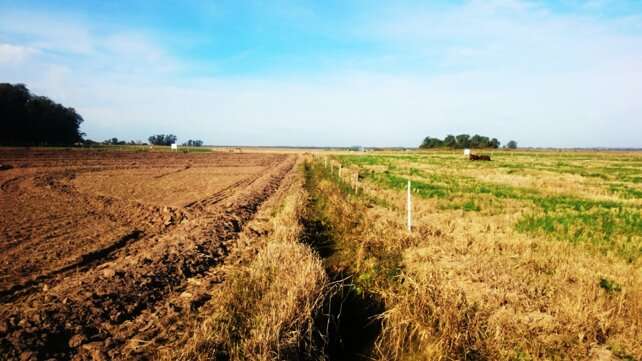Conventional rice cultivation system (left), under plowing and heavy disking and winter fallow; and integrated crop-livestock system (right), under no-till and cattle grazing in winter season in a Brazilian subtropical region. Credit: Luiz G. Denardin
Worldwide, flooded rice cultivation has degraded soil quality, reducing rice yield and requiring intense use of inputs like fertilizers. On the other hand, integrated crop-livestock systems (ICLS) appear to be a good alternative to increase nutrient-use efficiency of rice, improving rice yield.
In a recent Agronomy Journal article, researchers evaluated the impact of no-till and ICLS adoption on soil fertility and flooded rice nutrition and yield. Although these practices are not widely adopted in paddy fields, their combination has demonstrated several benefits.
The team found that flooded rice under ICLS yields more grain while requiring lower fertilizer application. Rice yield under ICLS does not respond to P and K fertilization supply, suggesting an important contribution of nutrient cycling to plant nutrition. The ICLS has higher nutrient-use efficiency, demonstrated by the greater use efficiency of nutrients, yielding a higher amount of grain with the same amount of nutrient uptake.
Efforts to better understand the processes regarding nutrient cycling under conservation management systems in rice cultivation, such as ICLS, seem to be necessary to develop new standards of fertilization. By focusing on conservation management systems in rice cultivation, researchers can find more efficient systems regarding nutrient use with less dependence on external inputs.
More information: Luiz Gustavo de O. Denardin et al, Integrated crop–livestock systems in paddy fields: New strategies for flooded rice nutrition, Agronomy Journal (2020). DOI: 10.1002/agj2.20148
Journal information: Agronomy Journal
Provided by American Society of Agronomy























